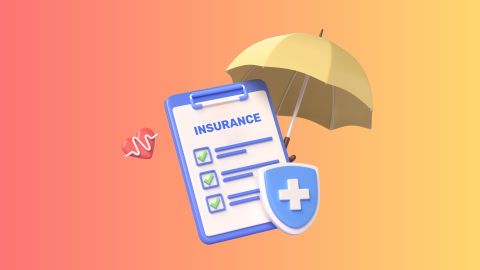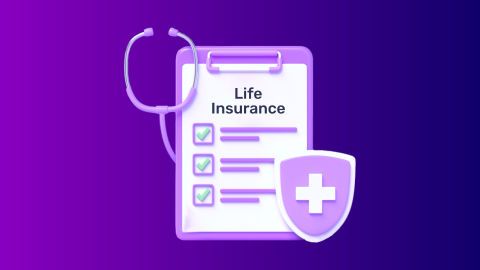A term insurance with critical illness rider provides dual protection. While the base term insurance plan ensures a payout to your nominee in case of your untimely death, the critical illness rider offers a lump sum amount if you're diagnosed with a listed critical illness during the policy term. This payout is made on diagnosis—no need to wait for treatment or hospital bills. It helps you cover medical expenses, manage household needs, or take time off work. Here's how it works in simple terms:
Term insurance with critical illness rider: How it works
Scenario
|
What Happens
|
Benefit Paid
|
1. Diagnosed with a covered critical illness and survives
|
You’re diagnosed with a critical illness like cancer or a heart attack during the policy term. You’re still alive and undergoing treatment.
|
The insurer pays the critical illness sum assured as a lump sum. This helps cover medical expenses, lifestyle adjustments, or income loss during recovery.
|
2. Death during the policy term without any critical illness
|
In case the policyholder passes away due to an accident or illness that’s not listed under the critical illness rider.
|
The nominee receives the full life cover amount (sum assured under the base term insurance plan).
|
3. Diagnosed with a critical illness and later pass away during the policy term
|
You receive the critical illness benefit during the policy term and then pass away later from the illness or any other reason.
|
The remaining life cover amount is paid to your nominee. (Some insurers reduce the base sum assured by the amount already paid under CI rider.)
|
4. Survive after receiving the critical illness benefit
|
You are diagnosed, receive the critical illness payout, and survive through the policy term.
|
You’ve already received the CI payout. The life cover may continue or reduce, depending on your policy’s terms. In some cases, the policy ends once CI benefit is paid.
|
How much critical illness cover do I need with term insurance?
The right amount of critical illness cover depends on your lifestyle, medical history, income, and financial responsibilities. As a rule of thumb, consider a CI cover equal to 5 to 10 times your annual income. This amount should be enough to replace lost income for 2–3 years, cover high treatment costs, and support your recovery period. Also factor in existing health insurance—if it’s limited, a higher CI cover makes sense. A term insurance plan with a critical illness rider ensures your family is protected and you’re financially equipped during a medical crisis.
Who should buy a critical illness term insurance?
Critical illness term insurance is not just for the elderly or those with health risks — it's for anyone who wants financial protection against life’s unexpected health events. Here's who should consider buying it:
Working professionals: A sudden illness can disrupt your income; this rider gives a financial cushion.
Primary breadwinners: Ensure your family doesn't bear the burden of treatment costs.
People with a family history of illnesses: If illnesses like cancer, stroke, or heart disease run in your family, you’re at a higher risk.
Self-employed individuals: No employer-backed insurance? This helps manage expenses during recovery.
Parents with dependents: Helps secure funds for treatment without disturbing your child's future savings.
Thinking about your financial backup plan? This rider can give peace of mind when it matters most.
Eligibility criteria of term insurance with critical illness rider
Before opting for this added protection, make sure you meet the insurer's basic criteria. Here’s a quick overview:
Parameter
|
Minimum
|
Maximum
|
Entry age
|
18 years
|
65 years
|
Policy term
|
5 years
|
40 years
|
Sum assured (rider)
|
Rs. 1 lakh
|
Up to base cover limit
|
Premium payment term
|
Regular/limited/single
|
Depends on policy
|
Medical check-up required
|
Based on age and cover
|
Based on risk profile
|
These criteria may vary slightly across insurers, so check the specifics before applying.
How to buy term insurance with critical illness rider?
Getting this cover is super simple — just follow these steps while buying or customising your term insurance:
Step 1: Visit the insurer’s website or a trusted aggregator platform.
Step 2: Choose a term insurance plan and select the “critical illness rider” option.
Step 3: Fill out your details, including medical history.
Step 4: Undergo a medical test (if required).
Step 5: Make the premium payment and wait for policy approval.
Ready to protect yourself? Compare plans and get personalised quotes today.
How to claim term insurance with critical illness rider cover?
When a critical illness strikes, claiming the rider benefit should be easy. Here’s how to do it:
Step 1: Inform the insurer immediately after diagnosis.
Step 2: Submit the required documents — diagnosis reports, ID proof, policy copy.
Step 3: Complete any additional forms or medical certificates requested.
Step 4: The insurer verifies the claim and disburses the lump sum amount.
Pro tip: Always read the list of covered illnesses to avoid surprises during claims.
Key takeaways about term insurance with critical illness rider
Wrapping it up — here’s what you should remember about this helpful add-on:
It provides a lump sum payout on diagnosis of a listed critical illness.
The payout can be used for treatment, recovery, or income replacement.
It’s ideal for those with financial dependents or high healthcare costs.
Rider premium is affordable and tax-deductible under Section 80D.
Choose plans with broad illness coverage and simple claim process.
A small step today can offer big financial relief tomorrow. Explore your rider options now!
















